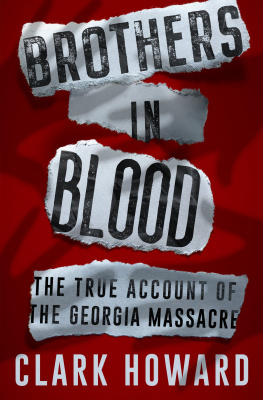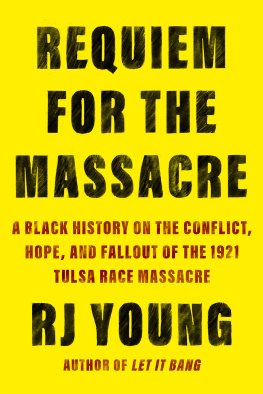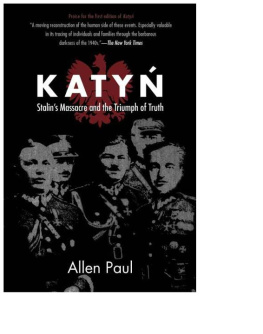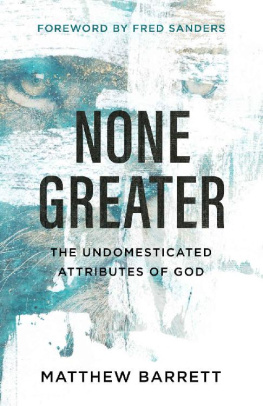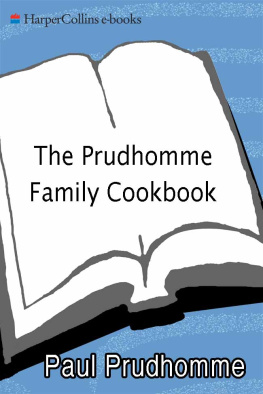Copyright 1988 by
The Curators of the University of Missouri
University of Missouri Press, Columbia, Missouri 65201
Printed and bound in the United States of America
All rights reserved
2d printing, 1991
Library of Congress Cataloging-in-Publication Data
Barrett, Paul W.
Young brothers massacre.
1. Young, Jennings. 2. Young, Harry. 3. HomicideMissouriBrooklineCase studies. 4. Police murdersMissouriBrooklineCase studies. I. Barrett, Mary H. II. Title.
HV6534.B76B37 1988 364.1'523 '09778792 87-19156
ISBN 0-8262-0650-6 (alk. paper)
eISBN: 978-0-8262-7299-7

This paper meets the minimum requirements of the American National Standard for Permanence of Paper for Printed Library Materials, Z39.48,1984.
PREFACE
On a bleak winter afternoon in the depths of the Great Depression, near the tranquil Queen City of the Ozarks, Springfield, Missouri, one of the most bizarre events in the history of crime occurred. Ten poorly armed law enforcement officers and one police station buff, on the day after New Year's, 1932, set off lightheartedly in three cars to arrest two local farm boys for auto theft. When the carnage ended, after only a few minutes, six of the men had been slain, a record number of police officers killed in one incident in the history of the United States. That record stands to this day. This is the story of how it happened and of the unlikely people whose lives were changed forever.
The two mass killers came from the most improbable background imaginable. They were not products of an over-crowded city ghetto where street-gang rumbles were common. They were not victims of broken homes. Nor were they abused children whose moral upbringing had been neglected. They were basically farm boys from a peaceful tiny community, Brookline, in central Greene County, Missouri. The massacre itself took place at the quiet, orderly farm home of the J. D. Young family
As recorded in a history of Christian County, Archibald Alexander Young, born in 1793, was the progenitor of the large Young family. He came to Missouri from Tennessee long before the Civil War and settled in what came to be known as the Nixa community.
The distaff side of the family, the Haguewoods, migrated from Virginia. These hardworking homesteaders were typical citizens of the Bible Belt, genuine fundamentalist Baptists to whom the idea of a massacre would have been unbelievable and abhorrent. The parents of the Young brothers, J. D. (Daddy) Young and Willie Florence (Mom) Haguewood Young, were, in fact, cousins. It was two of their sons, Jennings and Harry, who were to make history by killing the record number of police officers.
1
HEARTBREAK FARMING IN OKLAHOMA
For more than seventy years a formal photograph of the J. D. Young family has been preserved in the family archives. Frozen in the stiff poses typical of the days before fast photography, the father, mother, aunt, a married daughter's child, and all eleven children are lined up in order of age. Two dogs are included. The children are almost exactly two years apart in age. This photograph, taken in 1913, was made in front of the house that the Youngs built two miles east of Frederick in Tillman County, Oklahoma.
An earlier family album photograph, probably taken in 1908, was later printed in a history of Tillman County. This picture, too, shows James David and Willie Florence Young and their eleven children, each with his or her full name spelled out. Here the boys are decked out in hats, galluses, and imitation cowboy outfits. No one seeing these pictures of agrarian innocence could imagine that three of the sons would eventually establish long criminal records, much less that two of them would make history by killing the largest number of law enforcement officers in a single episode in the entire history of the United States.
In the formal photographs the family members are proudly dressed in their best finery. In the earlier picture, Vinita is a baby in her mother's arms. In the other, she wears a knee-length white dress and long black stockings and is the only one sporting a white hat. Although one cannot see the color of her blue eyes, she is obviously a cherubic blonde. Beside her stands her sister Lorena in a lace-trimmed dress, black stockings, and high-laced shoes. A person looking at such well-dressed naivete would find it impossible to imagine that the two sisters would one day ineptly trigger the events that would end in the deaths not only of six police officers but also, four days later, of the Young brothers, Jennings and Harry, in a hail of bullets in Houston, Texas.
The 1913 picture shows boys in peg-topped trousers, long coats, and ties. Their hair is close-cropped and brushed. Willie, the mother, in her black dress with high collar and tie, typifies the dozens of overworked but proud women pictured in the ten-pound, handsomely bound history of Tillman County. It took hardy women to follow the explorers, trappers, trailmakers, and squatters westward. Here, preserved forever in these photographs, are the homesteaders who settled and permanently established farm communities in the course of the westward movement of population.
In fact, the people in these portraits, dressed in their best, are shown at the culmination of a colonizing process, not at the beginning. The pictures do not give a glimpse of the backbreaking hardships that were necessary to farm and to build homes after the Kiowas and Comanches, the Plains Indians of Oklahoma, were ousted from the land.
Tillman County had been a part of an Indian reservation of 4,639 square miles. In 1901 and 1906, the government declared two openings for homesteaders for the grasslands known as the Big Pasture. Adventurers and opportunists poured in from all over the United States, Germany, and Russia. In August 1901 alone, 200,000 registrants waited anxiously in Lawton for the land lottery. Among them was James David Young. He came from Christian County, Missouri, where he had been a farm renter.
James (J. D.) Young filed a claim on 160 acres of farmland two miles east of present-day Frederick. In 1902 he went back to Ozark, Missouri, to gather up his familyhis wife, Willie Florence, and seven of the eight children living at that time (one remained in Ozark)and returned to Tillman County to prove up his claim by what was rightly famed as heartbreak farming.
Like others, J. D. chartered a boxcar to make the trip. In one end were the Youngs' household goods, in the other their livestock. J. D., Jarrett, Oscar, and Paul occupied the middle section, while Willie and the other four childrenMary Ellen, William Jennings, Holly Gladys, and Florence Willierode, only slightly more comfortably, in a passenger train. (The remaining three Young children were born in later years.)
The journey ended for the train passengers in Lawton, a tent city. Three days later, J. D. and the boys arrived with their livestock and belongings. Together the family began a grueling two-day trip over all-but-impassable roads from Lawton to their campsite. On the first night, the pioneering Young homesteaders camped out beside the wagons, on Cache Creek. The next day camp was established on the bare 160 acres, and J. D. returned to Lawton for lumber.


 This paper meets the minimum requirements of the American National Standard for Permanence of Paper for Printed Library Materials, Z39.48,1984.
This paper meets the minimum requirements of the American National Standard for Permanence of Paper for Printed Library Materials, Z39.48,1984.


